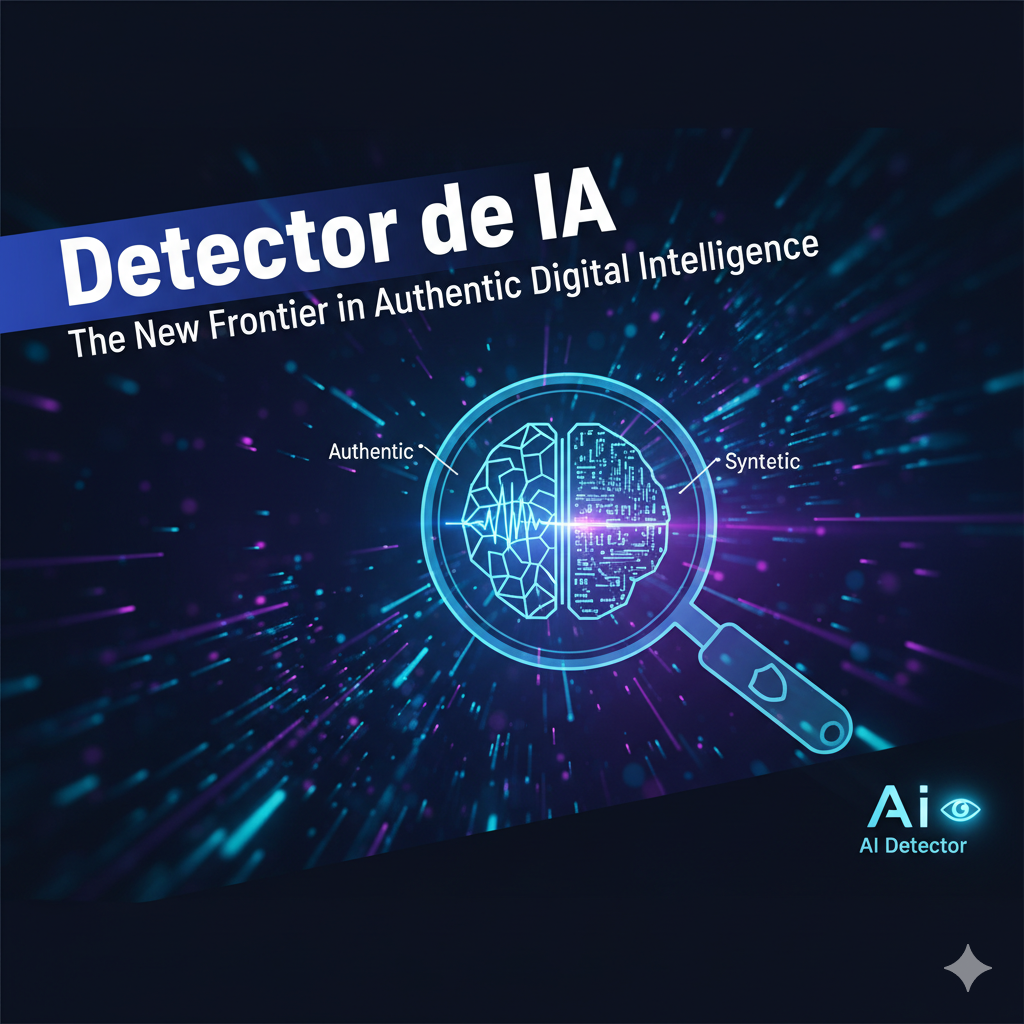Detector de IA: The New Frontier in Authentic Digital Intelligence

In an era where machines write poetry, design architecture, and simulate emotions, distinguishing between what’s human and what’s artificial has become a fascinating challenge. Enter the detector de IA — a powerful tool designed to pull back the digital curtain and reveal the true origin of online content. But the story of these detectors is more than just algorithms sniffing out algorithms; it’s a narrative about trust, creativity, and the evolution of human communication itself.
Why the World Suddenly Cares About AI Detection
Not long ago, artificial intelligence was a niche fascination for tech enthusiasts. Today, it’s everywhere — in classrooms, boardrooms, and even your smartphone keyboard. With this explosion of AI-generated content, industries started asking the same pressing question: How do we know if what we’re reading was written by a person or a machine?
That’s where the detector de IA becomes crucial. These detectors analyze sentence rhythm, vocabulary patterns, and structural tendencies to identify whether content was machine-generated. They’ve become the silent guardians of authenticity in journalism, education, and online publishing.
How a Detector de IA Actually Works
Think of a detector de IA as a linguistic investigator. It doesn’t “read” in the emotional sense — instead, it measures probabilities. It looks for signs like repetitive phrasing, unnatural transitions, or over-polished grammar that machines often produce. Some advanced models even track how ideas develop across paragraphs to determine whether they stem from human creativity or algorithmic prediction.
In essence, the detector doesn’t accuse — it analyzes. It offers probabilities that empower users to make informed decisions about the integrity of what they’re reading or publishing.
Real-World Applications Beyond Academia
While teachers and editors were among the first to embrace AI detection, the tool’s relevance now stretches far beyond classrooms.
-
Media Verification: News outlets use detectors to ensure their sources and guest submissions come from authentic human perspectives.
-
Corporate Transparency: Businesses check marketing and PR content to maintain credibility and avoid accidental plagiarism from AI tools.
-
Legal and Academic Sectors: Law firms and universities are adopting detector de IA solutions to preserve originality and intellectual honesty.
The Human Touch: What Machines Still Can’t Fake
Ironically, the rise of AI detectors is reviving appreciation for genuine human creativity. Emotional nuance, spontaneous humor, and cultural subtlety remain traits machines struggle to mimic convincingly. A well-written paragraph filled with imperfection can sometimes feel more human than a flawless, AI-polished article.
So, while the detector de IA serves as a watchdog against artificial manipulation, it also celebrates what makes us unique — our ability to think beyond patterns.
The Future of AI Detection: Cooperation, Not Competition
The next phase isn’t humans versus AI; it’s humans with AI. The smartest detector de IA systems of the future won’t just identify machine-written text — they’ll help enhance it. By guiding writers on how to add emotional authenticity or stylistic variation, these detectors could become creative partners instead of strict judges.
Final Thoughts
The AI detector represents more than a technical safeguard; it’s a reflection of our evolving digital ethics. As AI continues to shape how we create, share, and learn, the demand for truth and originality will only grow stronger. In that quest, these detectors aren’t just software — they’re a reminder that, even in a world of intelligent machines, the human spark still matters most.
For More Blogs: Click Here
- Art
- Crafts
- Drinks
- Fitness
- Food
- Jeux
- Health
- Domicile
- Literature
- Music
- Networking
- Finance
- Autre
- Hotels
- Shopping
- Sports
- Wellness


